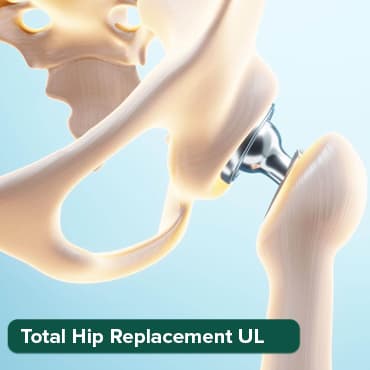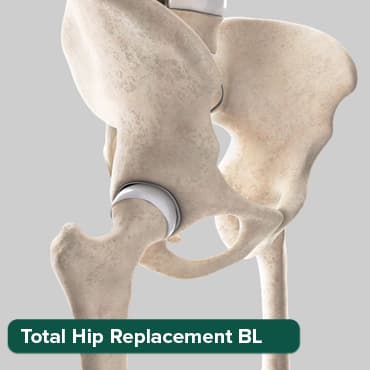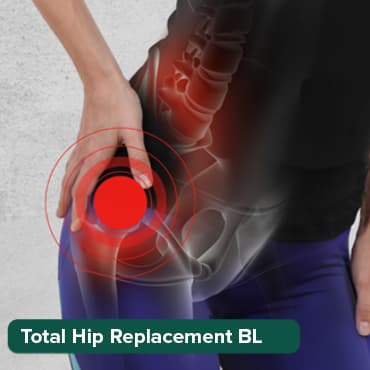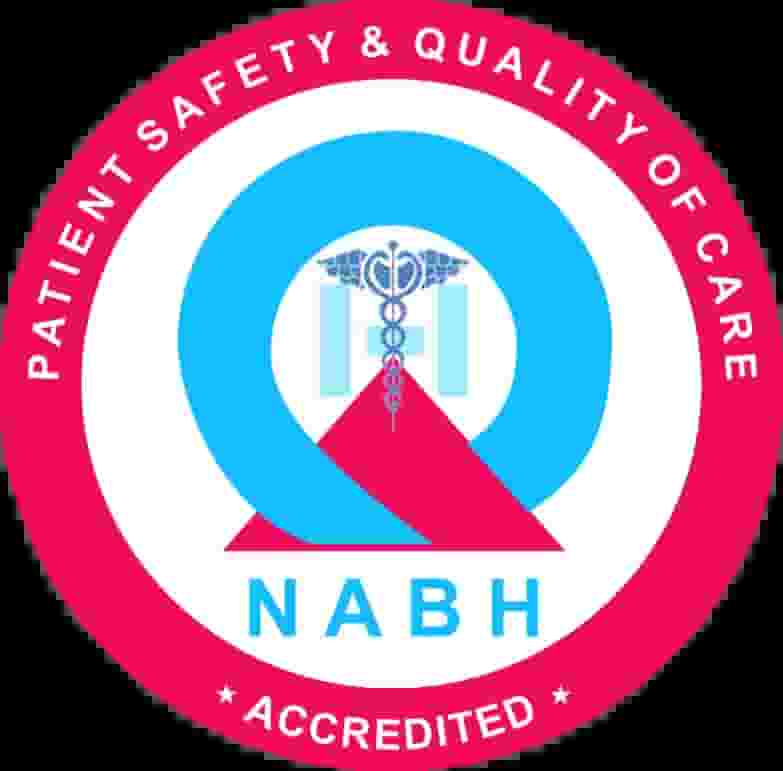
কিডনিতে পাথর: একটি বিশ্বব্যাপী স্বাস্থ্য চ্যালেঞ্জ আমরা সবাই মোকাবেলা করি
08 Aug, 2023
 হেলথট্রিপ টিম
হেলথট্রিপ টিমকিডনির পাথর, যা ডাক্তারি ভাষায় রেনাল লিথিয়াসিস বা নেফ্রোলিথিয়াসিস নামে পরিচিত, খনিজ এবং লবণের সমন্বয়ে গঠিত কঠিন গঠন যা কিডনির মধ্যে স্ফটিক হয়ে যায়।. এই গঠনগুলি সহস্রাব্দের জন্য মানব স্বাস্থ্যের চ্যালেঞ্জগুলির একটি অংশ হয়ে দাঁড়িয়েছে, এমনকি কিডনিতে পাথরের প্রমাণ এমনকি প্রাচীন মিশরীয় মমিগুলিতে পাওয়া যায.
বিশ্বব্যাপী, কিডনিতে পাথরের প্রকোপ বৃদ্ধি পাচ্ছে, যা উন্নত ও উন্নয়নশীল উভয় দেশকেই প্রভাবিত করছে. এটি অনুমান করা হয় যে বিশ্বের জনসংখ্যার 12% পর্যন্ত অভিজ্ঞতা লাভ করব কিডনিতে পাথর তাদের জীবনের এক পর্যায. তাদের গঠনের কারণগুলি ডায়েটরি অভ্যাস এবং হাইড্রেশন স্তর থেকে জেনেটিক প্রবণতাগুলিতে পরিবর্তিত হতে পার.
রূপান্তর তোমার সৌন্দর্য, আপনার আত্মবিশ্বাস বুস্ট
সঠিক প্রসাধনী খুঁজুন আপনার প্রয়োজনের জন্য পদ্ধতি।

আমরা বিস্তৃত পরিসরে বিশেষজ্ঞ কসমেটিক পদ্ধতির

কিডনিতে পাথরের সাথে সম্পর্কিত ব্যথাকে প্রায়শই একজন ব্যক্তি অনুভব করতে পারে এমন সবচেয়ে তীব্র অস্বস্তির একটি হিসাবে বর্ণনা করা হয়. তবে শারীরিক ব্যথা কেবল একটি দিক. কিডনি পাথরের উপস্থিতি সংক্রমণ এবং কিডনির ক্ষতি সহ বিভিন্ন জটিলতার কারণ হতে পার. তদুপরি, শর্তটি কোনও ব্যক্তির জীবনমানের উপর উল্লেখযোগ্য প্রভাব ফেলতে পারে, যার ফলে মিসড ওয়ার্কডে এবং যথেষ্ট সংবেদনশীল টোলের দিকে পরিচালিত হয.
কিডনিতে পাথরের ধরন, কারণ, উপসর্গ এবং কিডনিতে পাথরের চিকিৎসা বোঝা অত্যন্ত গুরুত্বপূর্ণ, শুধু আক্রান্তদের জন্য নয়, বৃহত্তর বিশ্ব সম্প্রদায়ের জন্য, কারণ আমরা সম্মিলিতভাবে আরও ভালো প্রতিরোধ ও ব্যবস্থাপনার কৌশলের দিকে কাজ কর. এখন এটা আলোচনা করা যাক
কিডনি পাথর ক??
এর মূল অংশে, কিডনিতে পাথরের গঠন প্রস্রাবে পাওয়া পদার্থের ভারসাম্যহীনতার ফলে।. আমাদের কিডনি, পাঁজরের নীচে অবস্থিত শিম-আকৃতির অঙ্গগুলি রক্ত থেকে বর্জ্য পদার্থ এবং খনিজ এবং লবণ সহ অতিরিক্ত পদার্থগুলিকে ফিল্টার করার জন্য দায. এই বর্জ্য পণ্যগুলি প্রস্রাবের মাধ্যমে শরীর থেকে বেরিয়ে আস. যাইহোক, যখন নির্দিষ্ট পদার্থের ঘনত্ব খুব বেশি হয়ে যায়, তারা স্ফটিক তৈরি করতে পারে, পাথর তৈরি কর.
প্রাথমিকভাবে চার ধরনের কিডনিতে পাথর রয়েছে, প্রতিটিরই স্বতন্ত্র গঠন রয়েছে:
মধ্যে সবচেয়ে জনপ্রিয় পদ্ধতি ভারত
মোট হিপ প্রতিস্থাপন
80% পর্যন্ত ছাড়
90% রেট করা হয়েছে
সন্তোষজনক

মোট হিপ প্রতিস্থাপন
80% পর্যন্ত ছাড়
90% রেট করা হয়েছে
সন্তোষজনক

মোট হিপ প্রতিস্থাপন-
80% পর্যন্ত ছাড়
90% রেট করা হয়েছে
সন্তোষজনক

অ্যাঞ্জিওগ্রাম
80% পর্যন্ত ছাড়
90% রেট করা হয়েছে
সন্তোষজনক

এএসডি বন্ধ
80% পর্যন্ত ছাড়
90% রেট করা হয়েছে
সন্তোষজনক

1. ক্যালসিয়াম পাথর
সবচেয়ে সাধারণ প্রকার, এগুলি সাধারণত ক্যালসিয়াম অক্সালেট আকারে থাকে. অক্সালেট এমন একটি পদার্থ যা অনেক খাবারে পাওয়া যায় এবং আমাদের লিভারও এটি তৈরি কর. ভিটামিন ডি এর উচ্চ মাত্রা, কিছু বিপাকীয় ব্যাধি এবং কিছু অস্ত্রোপচার পদ্ধতি প্রস্রাবে ক্যালসিয়াম বা অক্সালেটের ঘনত্ব বাড়াতে পার.
2. স্ট্রুভাইট পাথর
একটি গ্লোবাল হেলথ চ্যালেঞ্জ যা আমরা সবাই মোকাবেলা করি: এইগুলি একটি সংক্রমণের প্রতিক্রিয়া হিসাবে, যেমন মূত্রনালীর সংক্রমণের মতো. তারা দ্রুত বাড়তে পারে এবং বেশ বড় হতে পারে, কখনও কখনও কিছু লক্ষণ বা সামান্য সতর্কতা সহ.
3. ইউরিক অ্যাসিড পাথর
যারা পর্যাপ্ত তরল পান করেন না, বিশেষ করে পানি, বা যারা খুব বেশি তরল হারান, যারা উচ্চ-প্রোটিন খাবার খান এবং যারা গাউটে আক্রান্ত তাদের ইউরিক অ্যাসিড পাথর তৈরি হতে পারে।. জেনেটিক কারণগুলিও ঝুঁকি বাড়িয়ে তুলতে পার.
4. সিস্টাইন পাথর
এই পাথরগুলি বংশগত ব্যাধিতে আক্রান্ত ব্যক্তিদের মধ্যে তৈরি হয় যা কিডনিকে নির্দিষ্ট অ্যামিনো অ্যাসিড (সিস্টিনুরিয়া) খুব বেশি নির্গত করে।.
পাথরের ধরন বোঝা অত্যন্ত গুরুত্বপূর্ণ, শুধুমাত্র চিকিত্সার জন্য নয়, প্রতিরোধের জন্যও. জন যেমন শীঘ্রই আবিষ্কার করবেন, কিডনিতে পাথর নিয়ে তার যাত্রা সবেমাত্র শুরু হয়েছিল এবং জ্ঞানই হবে তার সবচেয়ে শক্তিশালী অস্ত্র.
কারণ এবং ঝুঁকির কারণ
কিডনিতে পাথরের গঠন বিভিন্ন কারণের একটি জটিল ইন্টারপ্লে. যদিও যে কেউ কিডনিতে পাথর বিকাশ করতে পারে, নির্দিষ্ট উপাদানগুলি ঝুঁকি বাড়িয়ে তুলতে পার. আসুন প্রাথমিক কারণ এবং ঝুঁকির কারণগুলির মধ্যে কিছু অনুসন্ধান কর:
1. ডিহাইড্রেশন এবং এর ভূমিক:
- দীর্ঘস্থায়ী ডিহাইড্রেশন কিডনিতে পাথরের একটি প্রধান কারণ. যখন শরীরে পর্যাপ্ত জলের অভাব হয়, তখন প্রস্রাব নির্দিষ্ট খনিজগুলির উচ্চ স্তরের সাথে ঘনীভূত হয. সময়ের সাথে সাথে, এই খনিজগুলি ক্রিস্টালাইজ করতে পারে, পাথর তৈরি কর. গরম জলবায়ু সহ অঞ্চলগুলি প্রায়শই ঘাম বৃদ্ধি এবং তরল গ্রহণের হ্রাসের কারণে কিডনিতে পাথরের উচ্চ হার দেখতে পায.
2. খাদ্যতালিকাগত কারণ:
- উচ্চ লবণ গ্রহণ: প্রস্রাবে ক্যালসিয়াম বাড়ানোর পাশাপাশি, একটি উচ্চ লবণযুক্ত খাবার সাইট্রেটের পরিমাণও কমাতে পারে, প্রস্রাবের একটি রাসায়নিক যা পাথর গঠনে বাধা দেয়।.
- উচ্চ প্রোটিন খাবার: প্রচুর পরিমাণে প্রাণী প্রোটিন গ্রহণ করা ইউরিক অ্যাসিডের মাত্রা বাড়িয়ে তুলতে পারে এবং প্রস্রাবে সাইট্রেটের মাত্রা হ্রাস করতে পারে, উভয়ই পাথর গঠনে অবদান রাখতে পার.
- উচ্চ অক্সালেট খাবার: দেহ প্রাকৃতিকভাবে অক্সালেট উত্পাদন করে, নির্দিষ্ট খাবারগুলি প্রস্রাবে অক্সালেটের মাত্রা উল্লেখযোগ্যভাবে বৃদ্ধি করতে পার. উদাহরণগুলির মধ্যে রয়েছে বিট, চকোলেট, চা এবং বেশিরভাগ বাদাম.
3. চিকিৎসাবিদ্যা শর্ত:
- হাইপারপ্যারাথাইরয়েডিজম: এই অবস্থার ফলে খাবার থেকে ক্যালসিয়াম শোষণ বৃদ্ধি পেতে পারে, যার ফলে প্রস্রাবে ক্যালসিয়ামের মাত্রা বেশি হয.
- মূত্রনালীর সংক্রমণ: দীর্ঘস্থায়ী ইউটিআইএস স্ট্রুভাইট পাথর গঠনের দিকে পরিচালিত করতে পারে, যা প্রায়শই বড় এবং চিকিত্সা করা আরও চ্যালেঞ্জিং হতে পার.
- রেনাল টিউবুলার অ্যাসিডোসিস: এই বিরল অবস্থা কিডনির প্রস্রাবকে অ্যাসিডিফাই করার ক্ষমতাকে প্রভাবিত কর. ফলস্বরূপ, অতিরিক্ত ক্ষারযুক্ত প্রস্রাব পাথর গঠনের দিকে পরিচালিত করতে পার.
- সিস্টিনুরিয: একটি বংশগত অবস্থা যেখানে কিডনি অতিরিক্ত পরিমাণে অ্যামিনো অ্যাসিড সিস্টাইন নির্গত করে, যা সিস্টাইন পাথর গঠনের দিকে পরিচালিত করে.
4. ওষুধ:
- মূত্রবর্ধক: কিছু মূত্রবর্ধক ক্যালসিয়াম নির্গমন হ্রাস করতে পারে, যার ফলে প্রস্রাবে ক্যালসিয়াম ঘনত্ব বৃদ্ধি পায.
- ক্যালসিয়াম ভিত্তিক অ্যান্টাসিড: দীর্ঘায়িত ব্যবহার রক্ত এবং প্রস্রাবে ক্যালসিয়ামের মাত্রা বাড়িয়ে তুলতে পার.
- নির্দিষ্ট অ্যান্টিবায়োটিক: সিপ্রোফ্লোকসাকিন এবং সালফা অ্যান্টিবায়োটিকগুলির মতো ওষুধগুলি নির্দিষ্ট ধরণের পাথরের ঝুঁকি বাড়িয়ে তুলতে পার.
5. জিনগত প্রবণত:
- পারিবারিক ইতিহাস একটি গুরুত্বপূর্ণ ভূমিকা পালন করে. নির্দিষ্ট জেনেটিক প্যাটার্ন এবং বংশগত কারণগুলি ব্যক্তিদের পরিবর্তিত খনিজ বিপাক এবং পাথরের ঝুঁকি বাড়াতে পার.
- বিরল জেনেটিক ডিসঅর্ডার: ডেন্ট ডিজিজ বা প্রাথমিক হাইপারক্সালুরিয়ার মতো অবস্থাগুলি পাথর গঠনের ঝুঁকি উল্লেখযোগ্যভাবে বাড়িয়ে তুলতে পারে.
6. অন্যান্য কারণের
- স্থূলত: উচ্চতর বডি মাস ইনডেক্স (BMI), বড় কোমরের আকার এবং ওজন বৃদ্ধি কিডনিতে পাথর হওয়ার ঝুঁকি বাড়ায.
- পাচক রোগ এবং সার্জারি: গ্যাস্ট্রিক বাইপাস সার্জারি, প্রদাহজনক অন্ত্রের রোগ, বা দীর্ঘস্থায়ী ডায়রিয়া ক্যালসিয়াম এবং জলের শোষণকে প্রভাবিত করতে পারে, পাথর গঠনের ঝুঁকি বাড়ায়.
এই জটিল কারণ এবং ঝুঁকির কারণগুলি অত্যন্ত গুরুত্বপূর্ণ. সম্ভাব্য ট্রিগারগুলি চিহ্নিত করে এবং অবহিত জীবনযাত্রার পছন্দগুলি তৈরি করে, ব্যক্তিরা তাদের ঝুঁকি হ্রাস করতে পারে এবং কিডনি স্বাস্থ্যের আরও ভাল প্রচার করতে পার.
কিডনিতে পাথরের লক্ষণ
কিডনিতে পাথর ছোট হতে পারে, তবে তাদের লক্ষণগুলি তীব্র এবং উপেক্ষা করা কঠিন হতে পারে. এই লক্ষণগুলি তাড়াতাড়ি স্বীকৃতি দেওয়া দ্রুত হতে পার চিকিত্স:
হালকা অস্বস্তি থেকে গুরুতর ব্যথা পর্যন্ত উপসর্গ সহ কিডনিতে পাথর বিভিন্ন উপায়ে প্রকাশ পেতে পারে. সময়মত রোগ নির্ণয় এবং চিকিত্সার জন্য এই লক্ষণগুলি সনাক্ত করা অত্যন্ত গুরুত্বপূর্ণ. এখানে একটি বিস্তারিত ব্রেকডাউন আছ:
- ব্যাথা: প্রায়শই সবচেয়ে লক্ষণীয় লক্ষণ, ব্যথার প্রকৃতি এবং অবস্থান পাথরের আকার এবং অবস্থানের উপর ভিত্তি করে পরিবর্তিত হতে পারে.
- পার্শ্বদেশ ব্যথা: এটি পাঁজরের নীচে পিঠের একপাশে ব্যথা, প্রায়শই গুরুতর এবং তলপেট এবং কুঁচকিতে বিকিরণ করতে পারে. এটি তরঙ্গের মধ্যে আসতে পারে এবং তীব্রতায় ওঠানামা করতে পারে.
- কুঁচকি বা তলপেটে ব্যথা: মূত্রনালী দিয়ে পাথর সরে যাওয়ার সাথে সাথে ব্যথা তলপেটে বা কুঁচকিতে যেতে পারে.
- প্রস্রাবের সময় ব্যথা: যদি পাথরটি মূত্রাশয়ের কাছে থাকে তবে প্রস্রাব করার সময় কেউ ব্যথা অনুভব করতে পারে.
- প্রস্রাবের পরিবর্তন
- হেমাটুরিয়া: এটি প্রস্রাবে রক্তের উপস্থিতি, এটিকে গোলাপী, লাল বা বাদামী করে তোলে. প্রস্রাবে রক্ত একটি সাধারণ উপসর্গ এবং মাঝে মাঝে ঘটতে পারে.
- মেঘলা বা দুর্গন্ধযুক্ত প্রস্রাব: পাথরের উপস্থিতি অতিরিক্ত খনিজ এবং লবণের কারণে প্রস্রাব মেঘলা দেখা দিতে পার. পাথরের পাশাপাশি একটি সংক্রমণ প্রস্রাবকে একটি অপ্রীতিকর গন্ধ দিতে পার.
- ঘন মূত্রত্যাগ: কোনও ব্যক্তি স্বাভাবিকের চেয়ে বেশি বার প্রস্রাব করার প্রয়োজনীয়তা অনুভব করতে পার.
- প্রস্রাব করার তাগিদ: এটি একটি ক্রমাগত অনুভূতি যে একজনের প্রস্রাব করা দরকার, মূত্রনালীর সংক্রমণের মত.
- অন্যান্য সংশ্লিষ্ট উপসর্গ
- বমি বমি ভাব এবং বমি: এই উপসর্গগুলি ব্যথার প্রতি শরীরের প্রতিক্রিয়ার কারণে ঘটতে পারে বা যদি পাথর বাধা সৃষ্টি করে, যার ফলে বর্জ্য পণ্য তৈরি হয.
- জ্বর এবং সর্দি: এগুলি মূত্রতন্ত্রে সংক্রমণের লক্ষণ, যা ঘটতে পারে যদি একটি পাথর প্রস্রাবের প্রবাহকে বাধা দেয় এবং এর পিছনে ব্যাকটেরিয়া বৃদ্ধি পায.
- পাথরের আকার এবং অবস্থান
- নীরব পাথর: ছোট পাথরগুলি মূত্রনালীর মাধ্যমে নজরে না যেতে পারে এবং লক্ষণগুলির কারণ হতে পারে ন. এগুলি প্রায়শই রুটিন ইমেজিং পরীক্ষার সময় আবিষ্কার করা হয.
- মূত্রনালী ব্লক করা পাথর: ইউরেটার্স হল সেই নল যা কিডনি থেকে মূত্রাশয় পর্যন্ত প্রস্রাব পরিবহন কর. এখানে পাথর তীব্র ব্যথা এবং প্রস্রাবের উপসর্গ সৃষ্টি করতে পার.
- কিডনিতে পাথর: এগুলি চলাচল না করা এবং কোনও বাধা সৃষ্টি না করা পর্যন্ত এগুলি লক্ষণগুলির কারণ হতে পারে ন.
এটি লক্ষ করা গুরুত্বপূর্ণ যে লক্ষণগুলি ব্যক্তিদের মধ্যে ব্যাপকভাবে পরিবর্তিত হতে পারে. কিছু তীব্র ব্যথা অনুভব করতে পারে, অন্যদের মধ্যে হালকা লক্ষণ বা কোনও কিছুই থাকতে পারে ন. যদি আপনার সন্দেহ হয় যে আপনার কিডনিতে পাথর রয়েছে বা উপরের কোনও লক্ষণ রয়েছে, বিশেষত তীব্র ব্যথা, প্রস্রাবে রক্ত, বা জ্বর এবং ঠান্ডা লাগার মতো সংক্রমণের লক্ষণগুলি, তাত্ক্ষণিকভাবে চিকিত্সার যত্ন নেওয়া জরুর.
কখন জরুরী যত্ন নিতে হবে
ব্যথা অসহ্য হয়ে গেলে.
- জ্বর এবং ঠান্ডা লাগার উপস্থিতি, যা সংক্রমণের ইঙ্গিত দিতে পারে.
- ক্রমাগত বমি বমি ভাব এবং বমি যা তরল গ্রহণে বাধা দেয়, ডিহাইড্রেশনের ঝুঁকি.
- প্রস্রাবে রক্ত.
প্রাথমিক স্বীকৃতি এবং হস্তক্ষেপ জটিলতা প্রতিরোধ করতে পারে এবং একটি মসৃণ পুনরুদ্ধার প্রক্রিয়ার দিকে নিয়ে যেতে পারে. যেহেতু জন শীঘ্রই জানতে পারবেন, এই লক্ষণগুলিকে প্রথম দিকে চিনতে পেরে কিডনিতে পাথর নিয়ে তার যাত্রায় সমস্ত পার্থক্য তৈরি হয়েছিল.
রোগ নির্ণয়: কি আশা করা যায়
তীক্ষ্ণ, নিরবচ্ছিন্ন ব্যথা অনুভব করা একটি উদ্বেগজনক লক্ষণ হতে পারে যে কিছু ভুল হয়েছে. লক্ষণগুলি সনাক্ত করা প্রথম পদক্ষেপ, তবে একটি সঠিক রোগ নির্ণয়ের জন্য গুরুত্বপূর্ণ কার্যকর চিকিত্সা.
প্রাথমিক রোগ নির্ণয়ের গুরুত্ব:
কিডনিতে পাথর তাড়াতাড়ি ধরা জটিলতা প্রতিরোধ করতে পারে, লক্ষণগুলির তীব্রতা কমাতে পারে এবং দ্রুত পুনরুদ্ধার করতে পার. এটি কিডনি বা মূত্রনালীর কোনও ক্ষতি করে পাথরের সম্ভাবনাও হ্রাস করতে পার.
ডায়াগনস্টিক পদ্ধতির বিস্তারিত ওয়াকথ্রু:
- শারীরিক পরীক্ষা: ডাক্তার পিছনে, পাশ এবং তলপেটে ব্যথা পরীক্ষা করব.
- প্রস্রাব পরীক্ষ: স্ফটিক, ব্যাকটেরিয়া, রক্ত এবং সাদা কোষের জন্য পরীক্ষা করা হচ্ছ.
- রক্ত পরীক্ষা: কিডনির কার্যকারিতা নিরীক্ষণের জন্য ক্যালসিয়াম, ইউরিক অ্যাসিড এবং ইলেক্ট্রোলাইট পরিমাপ করা.
- ইমেজিং পরীক্ষা: সিটি স্ক্যানগুলি অত্যন্ত বিস্তারিত এবং এমনকি ছোট পাথরও দেখাতে পার. আল্ট্রাসাউন্ড এবং এক্স-রেও সাধারণত ব্যবহৃত হয়.
- পাস করা পাথরের বিশ্লেষণ: যদি আপনি একটি পাথর পাস, এটি সংগ্রহ করা এবং তার ধরন নির্ধারণ করতে বিশ্লেষণ করা যেতে পারে.
চিকিৎসার বিকল্প
কিডনিতে পাথরের চিকিৎসার পদ্ধতি তাদের আকার, ধরন এবং অবস্থানের পাশাপাশি রোগীর সামগ্রিক স্বাস্থ্যের উপর ভিত্তি করে পরিবর্তিত হয়. এখানে উপলব্ধ বিভিন্ন চিকিত্সা বিকল্পের একটি বিশদ চেহারা আছ:
1. হাইড্রেশন
পদ্ধত: তরল গ্রহণ বৃদ্ধি মূত্রতন্ত্রকে ফ্লাশ করতে এবং কিডনিতে পাথরের উত্তরণকে সহজতর করতে পার. ব্যক্তির স্বাস্থ্যের উপর নির্ভর করে সুপারিশকৃত পরিমাণ সাধারণত প্রতিদিন প্রায় 2 থেকে 3 লিটার জল.
2. ব্যাথা ব্যবস্থাপন
ওষুধ:
- NSAIDs (ননস্টেরয়েডাল অ্যান্টি-ইনফ্লেমেটরি ড্রাগ): আইবুপ্রোফেন এবং নেপ্রোক্সেন-এর মতো ওষুধগুলি পাথর কেটে যাওয়ার সাথে সম্পর্কিত ব্যথা এবং প্রদাহ থেকে মুক্তি দিতে পার.
- অ্যাসিটামিনোফেন: যারা এনএসএআইডি নিতে পারবেন না তাদের জন্য অ্যাসিটামিনোফেন বিকল্প হতে পার.
- মাদকদ্রব্য: গুরুতর ব্যথার ক্ষেত্রে, শক্তিশালী প্রেসক্রিপশন ব্যথার ওষুধের প্রয়োজন হতে পার.
3. চিকিৎসা থেরাপ
ওষুধ:
4. লিথোট্রিপসি (এক্সট্রাকোরপোরিয়াল শক ওয়েভ লিথোট্রিপসি - ইএসডাব্লুএল)
পদ্ধতির বিবরণ:
- শক ওয়েভস: উচ্চ-শক্তির শব্দ তরঙ্গ শরীরের মধ্য দিয়ে যায় এবং কিডনির পাথরকে বালির দানার মতো ছোট টুকরো টুকরো করতে ব্যবহৃত হয়।.
- সেডেশন: এটি সাধারণত sedation বা হালকা এনেস্থেশিয়ার অধীনে করা হয়.
- পুনরুদ্ধার: বেশিরভাগ লোক একই দিনে বাড়িতে যেতে পারে এবং কয়েক দিনের মধ্যে স্বাভাবিক কার্যক্রম পুনরায় শুরু করতে পারে.
5. ইউরেটারোস্কোপ
পদ্ধতির বিবরণ:
- এন্ডোস্কোপিক সরঞ্জাম: একটি ইউরেটারোস্কোপ, যা একটি দীর্ঘ, টিউবুলার যন্ত্র একটি ক্যামেরা দিয়ে সজ্জিত, মূত্রনালীতে, মূত্রাশয় এবং ইউরেটার বা কিডনিতে প্রবেশ করা হয.
- পাথর অপসারণ বা ফ্র্যাগমেন্টেশন: পাথরটি হয় একটি ঝুড়ির ডিভাইস ব্যবহার করে পুনরুদ্ধার করা হয় বা একটি লেজার ব্যবহার করে ভেঙে যায.
- স্টেন্ট: প্রক্রিয়াটির পরে, পাথরের টুকরোগুলি পাস করতে প্রস্রাবের প্রবাহ এবং সহায়তা করার জন্য একটি স্টেন্ট ইউরেটারে রাখা যেতে পার.
6. পারকুটেনিয়াস নেফ্রোলিথোটোম
পদ্ধতির বিবরণ:
- ন্যূনতমরূপে আক্রমণকারী: পিছনে একটি ছোট ছেদ (প্রায় 1 সেমি) তৈরি করা হয় এবং একটি নেফ্রোস্কোপ সরাসরি কিডনিতে ঢোকানো হয.
- পাথর অপসারণ: বড় পাথর নলটির মাধ্যমে খণ্ডিত এবং সরানো যেতে পার.
- হাসপাতাল থাকার: এর জন্য সাধারণত হাসপাতালে ভর্তির প্রয়োজন হয় এবং বেশিরভাগ রোগী কয়েকদিন হাসপাতালে থাক.
7. ওপেন সার্জারি (নেফ্রোলিথোটোম)
পদ্ধতির বিবরণ:
- আক্রমণকারী সার্জারি: কিডনি এবং ইউরেটার অ্যাক্সেসের জন্য পিছনে একটি বৃহত্তর চিরা তৈরি করা হয.
- Sটোন অপসারণ: খোলার মাধ্যমে পাথরটি সরানো হয়; এই পদ্ধতিটি ব্যবহার করা হয় যখন অন্যান্য কম আক্রমণাত্মক পদ্ধতি সম্ভব হয় না বা ব্যর্থ হয.
- পুনরুদ্ধার: পুনরুদ্ধারের সময় দীর্ঘ এবং সাধারণত একটি হাসপাতালে থাকার অন্তর্ভুক্ত.
8. ডায়েটরি পরিবর্তন এবং প্রতিরোধ
- জল খাওয়াe: প্রতিদিন কমপক্ষে 2 লিটার প্রস্রাব তৈরির জন্য তরল গ্রহণ, বিশেষ করে পানি বৃদ্ধি করা.
- সিঅ্যালসিয়াম গ্রহণ: স্বাস্থ্যসেবা সরবরাহকারীর নির্দেশ না দেওয়া পর্যন্ত ডায়েটরি ক্যালসিয়াম হ্রাস করা উচিত নয.
- অক্সালেট: অক্সালেটে উচ্চ খাবার (ই.g., পালং শাক, রবার্ব, বাদাম এবং গমের ভুসি) সীমিত করার প্রয়োজন হতে পারে যদি আপনি ক্যালসিয়াম অক্সালেট পাথর তৈরি করেন.
- লবণ: লবণ গ্রহণ হ্রাস করুন, কারণ সোডিয়াম প্রস্রাবের মধ্যে ক্যালসিয়াম নির্গত হতে পারে, পাথরের ঝুঁকি বাড়িয়ে তোল.
- প্রোটিন: প্রাণী প্রোটিন (মাংস, ডিম) সীমাবদ্ধ করা নির্দিষ্ট ধরণের পাথরের ঝুঁকি হ্রাস করতে সহায়তা করতে পার.
- পটাসিয়াম: পটাসিয়ামের বেশি পরিমাণে ফল এবং শাকসব্জী সমৃদ্ধ ডায়েট খাওয়া নির্দিষ্ট ধরণের পাথর প্রতিরোধে সহায়তা করতে পার.
9. বিকল্প চিকিত্স
বিবেচনা:
- ভেষজ প্রতিকার: কিছু কিছু ভেষজ ঐতিহ্যগতভাবে কিডনিতে পাথরের ব্যবস্থাপনায় সাহায্য করে বলে বিশ্বাস করা হয়, তবে তাদের কার্যকারিতা এবং নিরাপত্তার জন্য বৈজ্ঞানিক প্রমাণ সীমিত.
- জীবনধারা পরিবর্তন: পাথর গঠন প্রতিরোধ করার জন্য সামগ্রিক পদ্ধতির অংশ হিসাবে ওজন ব্যবস্থাপনা এবং নিয়মিত ব্যায়ামেরও সুপারিশ করা যেতে পার.
10. বিশেষ বিবেচ্য বিষয
- গর্ভাবস্থ: অ্যানাস্থেসিয়া এবং ভ্রূণের শল্য চিকিত্সার ঝুঁকির কারণে অ আক্রমণাত্মক চিকিত্সা পছন্দ করা হয.
- সংক্রমণ পাথর (স্ট্রুভাইট): মূত্রনালীর সংক্রমণ এবং আরও পাথর বৃদ্ধি রোধ করার জন্য এই পাথরগুলির চিকিত্সা করা প্রয়োজন.
- সিস্টাইন পাথর: এই বিরল পাথরগুলির চিকিত্সা এবং প্রতিরোধের জন্য ওষুধ, খাদ্য সমন্বয় এবং পদ্ধতির সংমিশ্রণের প্রয়োজন হতে পারে.
11. ফলো-আপ যত্ন
- ইমেজ: নতুন পাথর নিরীক্ষণের জন্য পর্যায়ক্রমিক ইমেজিং পরীক্ষার প্রয়োজন হতে পার.
- রক্ত পরীক্ষা: ক্যালসিয়াম, ফসফরাস, ইউরিক অ্যাসিড এবং ইলেক্ট্রোলাইটগুলির জন্য রক্ত পরীক্ষা পর্যায়ক্রমে প্রয়োজন হতে পার.
- প্রস্রাব পরীক্ষ: 24-পাথর গঠনের কারণ কী তা সনাক্ত করতে এবং থেরাপির কার্যকারিতা পরীক্ষা করার জন্য ঘন্টা প্রস্রাব সংগ্রহের প্রয়োজন হতে পার:
- আয়তন: পর্যাপ্ত তরল গ্রহণের বিষয়টি নিশ্চিত করা বজায় রাখা হচ্ছ.
- পিএইচ: প্রস্রাবের অম্লতা বা ক্ষারত্ব পাথর গঠনের প্রচার বা বাধা দিতে পার.
- ক্রিস্টালুরিয়া: মাইক্রোস্কোপিক স্ফটিকের উপস্থিতি যা পাথরে পরিণত হতে পার.
- মলত্যাগের হার: বিভিন্ন আয়নের মাত্রা যেমন ক্যালসিয়াম, অক্সালেট, ইউরিক অ্যাসিড, সাইট্রেট, সোডিয়াম এবং অন্যান্য যা পাথর গঠনকে প্রভাবিত করতে পার.
এই পরীক্ষাগুলির উপর ভিত্তি করে, চিকিত্সা সামঞ্জস্য করা যেতে পারে. উদাহরণস্বরূপ, যদি প্রস্রাব খুব অম্লীয় বলে পাওয়া যায়, তাহলে প্রস্রাব কম অম্লীয় করার জন্য পটাসিয়াম সাইট্রেট নির্ধারণ করা যেতে পারে, যা ইউরিক অ্যাসিড পাথর দ্রবীভূত করতে এবং ক্যালসিয়ামের পাথর প্রতিরোধ করতে সাহায্য কর.
যারা ক্যালসিয়াম অক্সালেট পাথর তৈরি করে তাদের জন্য অক্সালেট বেশি খাবার (যেমন চকোলেট, বিট এবং বাদাম) এড়িয়ে চলার পরামর্শ দেওয়া যেতে পারে.
ইউরিক অ্যাসিড পাথরের জন্য, অ্যালোপিউরিনল নামক একটি ওষুধ রক্ত এবং প্রস্রাবের ইউরিক অ্যাসিডের মাত্রা কমাতে নির্ধারিত হতে পারে।. খাদ্যতালিকাগত পরিবর্তনেরও সুপারিশ করা যেতে পারে, যেমন পিউরিন-সমৃদ্ধ খাবার (যেমন লাল মাংস এবং শেলফিশ) খাওয়া কমানো এবং প্রস্রাবের pH বাড়াতে ক্ষারীয় খাবার বাড়ান.
বারবার পাথর বা সিস্টিনুরিয়ার মতো জটিল অবস্থার ক্ষেত্রে, পাথরের ধরন এবং অন্তর্নিহিত বিপাকীয় ব্যাধির উপর ভিত্তি করে আরও নির্দিষ্ট চিকিত্সা তৈরি করা হয়।.
প্রতিরোধ এবং দীর্ঘমেয়াদী ব্যবস্থাপনা
যাদের কিডনিতে পাথর হয়েছে তাদের জন্য পুনরাবৃত্তি প্রতিরোধ করা সবচেয়ে গুরুত্বপূর্ণ.
1. ডায়েটরি গাইডলাইনস:
- আলিঙ্গন: ক্যালসিয়াম সমৃদ্ধ খাবার (পরিপূরক নয়), উদ্ভিদ-ভিত্তিক প্রোটিন এবং সাইট্রাস ফল.
- এড়াত: উচ্চ লবণযুক্ত খাবার, অক্সালেট সমৃদ্ধ খাবার এবং অত্যধিক প্রাণিজ প্রোটিন.
2. পরিপূরক ভূমিক:
- পটাসিয়াম সাইট্রেট: পাথর গঠন কমাতে সাহায্য করে.
- ম্যাগনেসিয়াম: প্রস্রাবে স্ফটিক গঠন বাধা দিতে পার.
3. জীবনধারা পরিবর্তন:
- রুটিন: কিডনির স্বাস্থ্য নিরীক্ষণের জন্য নিয়মিত চেক আপ করুন.
- ব্যায়াম: শরীর এবং মূত্রনালীর সিস্টেমকে সক্রিয় রাখ.
- হাইড্রেশন: প্রতিদিন পর্যাপ্ত জল পান কর.
আমরা কীভাবে চিকিত্সার সাথে সাহায্য করতে পারি?
আপনি যদি ভারত, থাইল্যান্ড, সিঙ্গাপুর, মালয়েশিয়া, সংযুক্ত আরব আমিরাত এবং তুরস্কে চিকিত্সার সন্ধানে থাকেন তবে আসুনহেলথট্রিপ আপনার কম্পাস হতে. আমরা আপনার চিকিৎসা জুড়ে আপনার গাইড হিসেবে কাজ করব. আমরা আপনার পাশে থাকব, ব্যক্তিগতভাবে, এমনকি আপনার চিকিৎসা যাত্রা শুরু হওয়ার আগেই. নিম্নলিখিত আপনাকে প্রদান করা হবে:
- সম্পর্কিতনামকরা ডাক্তার 35টি দেশে বিস্তৃত একটি নেটওয়ার্ক থেকে এবং বিশ্বের বৃহত্তম স্বাস্থ্য ভ্রমণ প্ল্যাটফর্ম অ্যাক্সেস করুন.
- সহযোগিতায়335+ শীর্ষ হাসপাতাল , ফোর্টিস এবং মেদান্ত সহ.
- ব্যাপকচিকিত্সা নিউরো থেকে কার্ডিয়াক থেকে ট্রান্সপ্ল্যান্ট পর্যন্ত, নান্দনিকতা, এবং সুস্থতা.
- চিকিত্সা পরবর্তী যত্ন এবং সহায়তা.
- টেলিকনসালটেশন শীর্ষস্থানীয় সার্জনদের সাথে $1/মিনিট.
- অ্যাপয়েন্টমেন্ট, ভ্রমণ, ভিসা এবং ফরেক্স সহায়তার জন্য 44,000 রোগীর দ্বারা বিশ্বস্ত.
- শীর্ষ চিকিত্সা অ্যাক্সেস এবংপ্যাকেজ, যেমন এনজিওগ্রাম এবং আরও অনেক কিছু.
- প্রকৃত থেকে অন্তর্দৃষ্টি লাভরোগীর অভিজ্ঞতা এবং প্রশংসাপত্র.
- আমাদের সাথে আপডেট থাকুনমেডিকেল ব্লগ.
আমাদের সাফল্যের গল্প
নিয়মিত মেডিকেল চেক আপ.
কিডনিতে পাথর, প্রচলিত থাকাকালীন, এমন একটি অবস্থা যা সঠিক জ্ঞান এবং যত্নের সাথে নিয়ন্ত্রণ করা যায় এবং প্রায়শই প্রতিরোধ করা যায়. কারণগুলি, ঝুঁকির কারণগুলি এবং উপলব্ধ চিকিত্সার বিকল্পগুলি বোঝার মাধ্যমে, ব্যক্তিরা তাদের স্বাস্থ্য সম্পর্কে অবগত সিদ্ধান্ত নিতে পার. স্বাস্থ্যসেবা পেশাদারদের সাথে উন্মুক্ত যোগাযোগ বজায় রাখা এবং কারও স্বাস্থ্য যাত্রায় সক্রিয় থাকা অত্যন্ত গুরুত্বপূর্ণ. সঠিক পদ্ধতির সাথে, কিডনিতে পাথরের প্রভাব হ্রাস করা যেতে পারে, এটি একটি স্বাস্থ্যকর, আরও আরামদায়ক জীবনের দিকে পরিচালিত কর. মনে রাখবেন, প্রতিরোধ প্রায়ই সর্বোত্তম প্রতিকার, এবং ভালভাবে অবহিত হওয়া সেই লক্ষ্যের দিকে প্রথম পদক্ষেপ.
সুস্থতা চিকিত্সা
নিজেকে শিথিল করার সময় দিন
সর্বনিম্ন মূল্য নিশ্চিত!

সর্বনিম্ন মূল্য নিশ্চিত!






